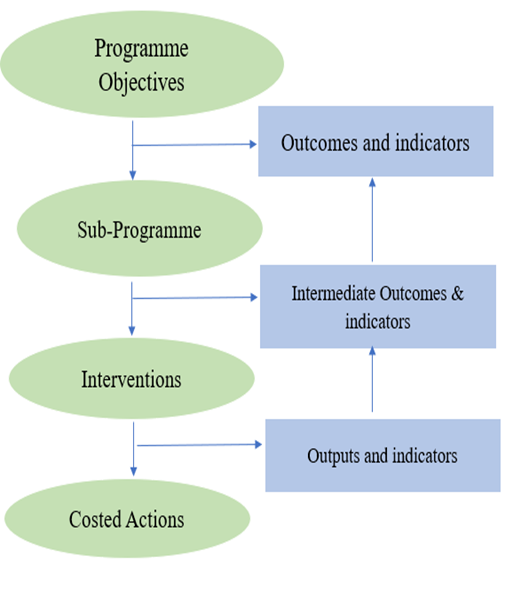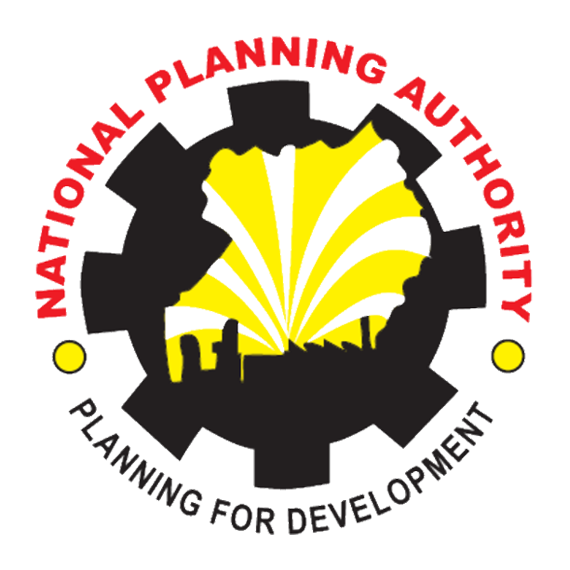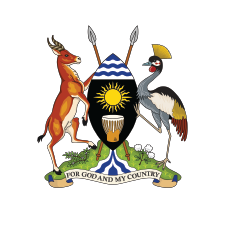Programme Implementation Action Plans
The adoption of the programme approach to planning and budgeting led to the introduction of the Programme Implementation Action Plans (PIAPs), which replaced the sector development plans. The PIAPs are results and action based with annualized targets and costs for the five-year period. They are expected to enhance collaboration between entities to deliver common results. They constitute a link between the MDA strategic plans and the LG development Plans to the NDPIII. They are the basis for development of MDA and LG plans.
The elements of the PIAPs

Key Definitions
Programme Outcomes: Changes brought about by public interventions upon individuals, social structures, or physical environment
Sub-Programme: A disaggregated groupings of interventions within the program concerned.
Intermediate outcome: An intermediate outcome or intermediate result is a critical outcome or result that must occur in order to reach the higher-level, end outcome/objective.
Outputs: A good or service provided by an MDA. Eg patients’ treatments, Functional Intensive Care Units (ICUs), irrigation dams.
Actions: types or categories of work process undertaken in the production and delivery of outputs. E.g., nursing, establishing ICUs, constructing irrigation dams.
Principles of developing Programme Implementation Action Plans
The guiding principles for preparation of PIAPs include:
- Goal/outcome based – they aim to achieve a specific goal that has been derived from key development issues that need to be addressed. This goal should have already been defined in the NDP.
- Participatory – there should be extensive stakeholder engagement to ensure all relevant issues are captured. The drafting of the PIAPs should consider concerns, capacities and competencies of individual stakeholders who contribute to the achievement of the programme goal.
- Inclusive – the planned activities should consider the diverse social groups and special needs disadvantages and vulnerable groups.
- Within the NDPIII Medium Term Expenditure Framework – plans should be realistic and activities should be budgeted within the NDPIII resource envelope projections
- Realistic and tangible – the PIAP should clearly define expected outputs and measure by which progress will be assessed.
Process and Contents of Programme Implementation Action Plan
The PIAP formulation process consist of three main stages, namely:
- Consultations
- Plan formulation, and
- Plan Approval, submission and dissemination.
The stages are interrelated and during execution, it is possible that some of them will be run concurrently rather than in sequence.
Warning: Undefined property: WP_Error::$taxonomy in /var/www/clients/client15/web15/web/wp-content/plugins/element-pro/modules/query-control/classes/elementor-post-query.php on line 259

